In this article, you’ll learn about the thought process that goes into taking a lensball photo. As with all forms of photography, a selection of the best location will give you the best results, but what makes a location works for lensball photography?
A lensball has the potential to really transform a scene in a way that is only usually possible with post-processing. Read on to see some examples of scenes taken with and without a lensball. Then review what you think of those transformations.
Getting your own lensball
If you like the idea of getting into lensball photography there really is no better time to do it. The number of photographers getting into this fascinating genre is growing all the time.
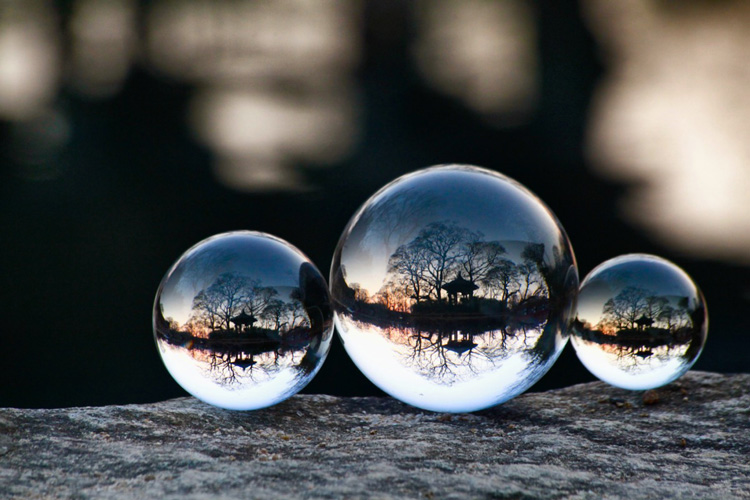
If want to learn which lensball might be best for you, read this article on that topic. Or you could just jump ahead and buy a lensball here.
What does a lensball do?
This article does not provide basic information about lensball photography. If you want to learn more you can do so by downloading a free lensball photography e-book, the link can be found in my author bio below. You can also read more about the basics of lensball photography in this article.
Briefly, a lensball is simply a glass sphere that uses the principals of refraction to invert the scene directly behind the ball. That scene then appears (upside down) inside the lensball itself.

Before and after the lensball
Next, let’s take a look at some photographs that show the same scene taken with and without the lensball.
By looking at these photos you can see how classic scenes can be photographed in a unique and creative way using a lensball. You’ll also see the versatility of the lensball and how it can be used in multiple areas and genres of photography.
Architecture
Architecture makes a really good choice for you as a lensball photographer, as it will fill the inside of the ball with a compelling subject. The large size of most architecture means it won’t appear too small inside the ball, but how does the lensball photo compare with a regular photo?
Taj Mahal
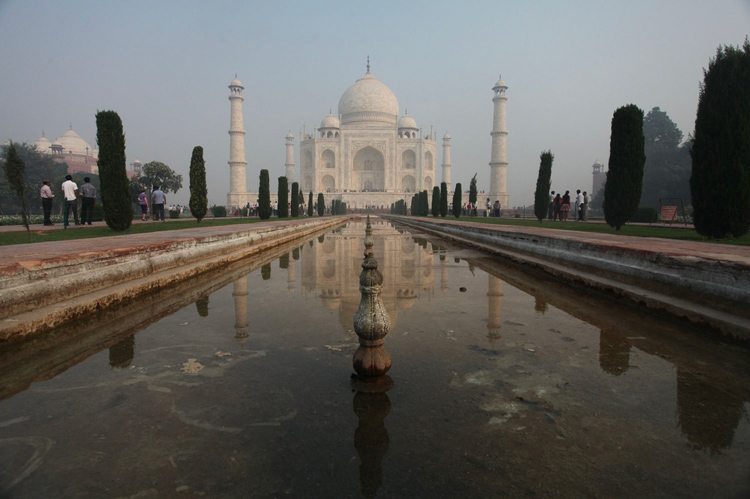
This is a very famous monument, arguably the most photographed building in the world. So to say every angle has been covered is a bit of an understatement, and you’ll certainly have seen the classic angles many times before.
It’s at locations like this that the lensball really comes into its own. In these images, you can see the lensball has taken the solid composition (above) and added a little more mystery to the photo (below).
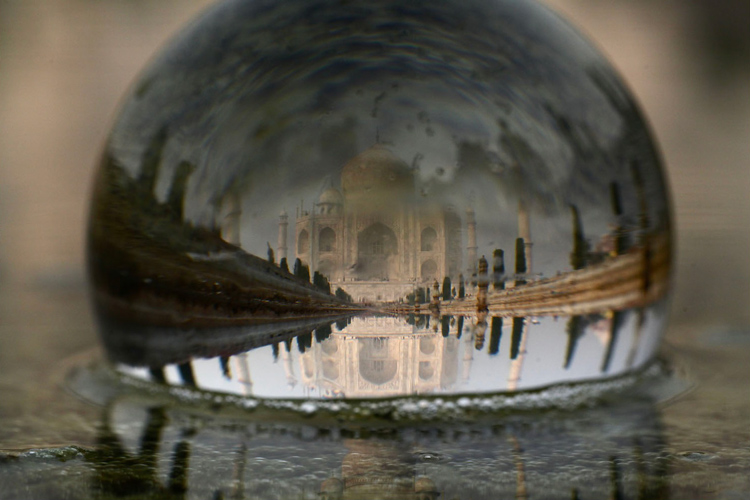

As the pond in front of the Taj Mahal was shallow, it allowed for reflected refraction, a great situation that negates the need to rotate the image in post-processing. This means the photo you see here is straight out of the camera.
Ferris wheel

A Ferris wheel is a great subject for the lensball. Ferris wheels are always going to be photogenic, and the lensball allowed this photo to be taken in a slightly different way.
The reason Ferris wheels work so well is that like the lensball they’re also circular. This helps with composition inside the lensball.
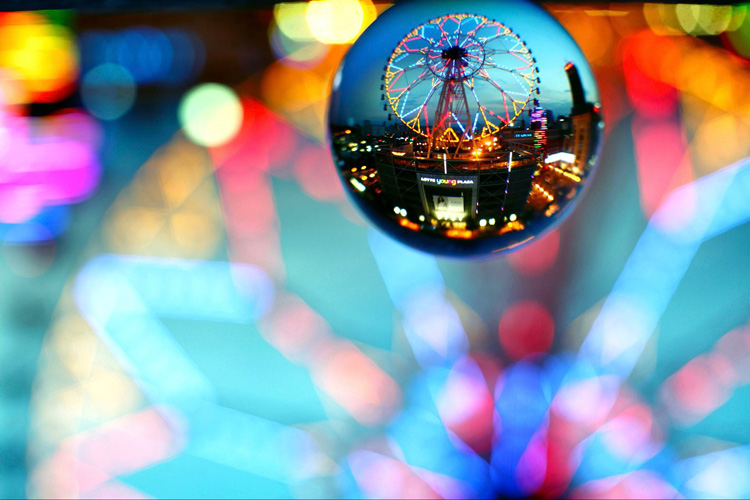
It means you have repeating curved lines that run through your frame in the ball, on the outside of the ball, and in the background behind the ball.
The after photo (above) also benefits from the bokeh effect, which is easy to produce when working with a lensball. Use a large aperture and the background will be out of focus when the image inside the ball is sharp.

Nature
The natural world also offers many opportunities for lensball photographers. The lensball can work very well in situations that require a wide-angle lens to capture a landscape scene.
Suncheon Bay

In this next set of photos, you can see a winter scene at a coastal location in South Korea. The photo above uses the standard composition for photographs taken at this location, with the S-line of the estuary leading the eye out to sea.
The lensball image below offers something different from the same location, even from much the same angle. This time the snow globe as a concept comes into play.

In addition to this, the extra element of the snow at the top of the photo adds extra context, which could not be included in the same way for a photo without the lensball.

Red versus green
There are few sights more magical than flower beds blooming across a forest floor.
In South Korea this happens in the autumn when the red spider lily flowers bloom. These red flowers produce a nice contrast to the green leaves found in the foliage, so compose well and you’ll get a strong photo.

This location is another example of a place or situation when a lensball offers you something different. Lining up the ball with the intersection between red and green means you have the colors swapping sides within your photo.
The ball in this case also allows a much wider area of capture, as you can see the top of the tree canopy in the lensball photo (which you can’t in the image above).

Try this with any spring or fall scene in your area and line up the horizon similarly and share your results in the comment area below this article. We’d love to see your images.
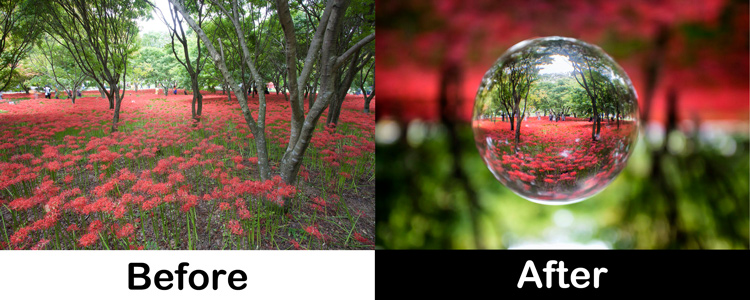
Portraits
Portraits are among the trickiest things to do well with a lensball. Once again they allow you to change the narrative of your photo and can be used in different ways.
The following are a couple of examples of portrait compositions done with a lensball.
Forest portrait

The images here show the same model both photographed inside the ball and as a regular portrait. You’ll notice the pose in each photo is different, this is down to concept and the impact of refraction.
While it’s true the photo above would work better with a stronger concept, the lensball provides just that. It worked best for the model to contract into a small shape. This more circular shape I found worked better and focused attention on the model’s facial expression.

Had the model been standing, the potential for distortion of her body in the ball would be higher. This is because the model’s head would be naturally more towards the edge of the ball, where distortion is greater.
NOTE: Try and get the person’s face closer to the center of the lensball to avoid any distortion.
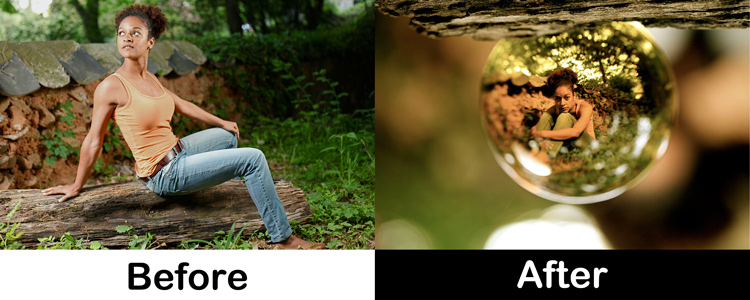
Jetty portrait
In this photo, a different approach was used toward the composition of the lensball image. Much more of the background is displayed and it’s not blurred out.
Once again the photo below doesn’t replicate the exact scene but they were both photographed at the same location.
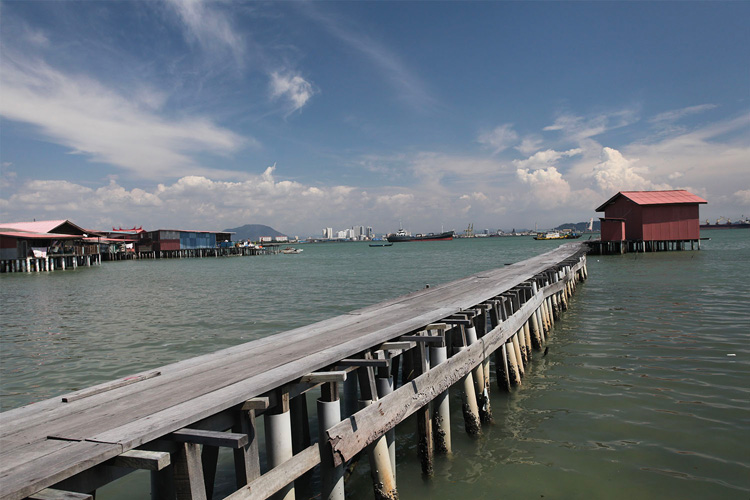
The composition with the women looking off into the distance toward the red hut has a point of interest. The ball adds an extra element in this photo, with the repeated scene inside the ball.

This provides a strong example of what refraction is and what it can do for your photos. The image inversion in the ball as compared to the background can clearly be seen here.

Try creative techniques that transform the scene
Using a lensball to transform your scene is one of many approaches you can use. There are also many in-camera or post-processing techniques available at your disposal.
Do you have a favorite technique you like to use, perhaps it’s with the lensball? If you have photos that show this transformation before and after, then please share them in the comments below.
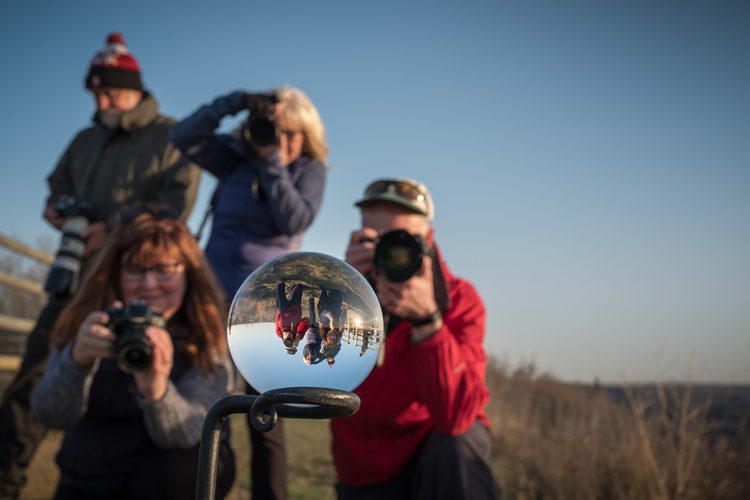
Likewise please share your thoughts on which of the eight lensball examples above you think works best as a transformation, and why.
Finally, why not buy yourself a lensball today and get out and try out this style of photography yourself. Let’s see what you can transform!
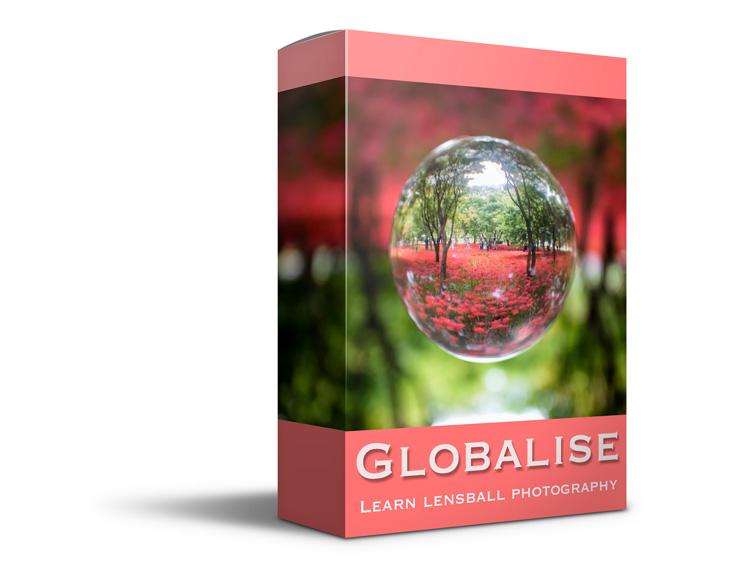
If you’re interested in learning about lensball photography, my course called Globalise, comes highly recommended. Digital Photo mentor readers can apply the following code to get a discount on any of my courses: DPM20.